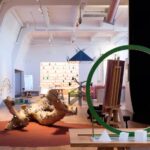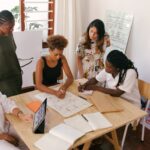
Project Outline and Strategy: Workshop Challenge

As already mentioned, this week was about developing a project outline and strategy for the upcoming weeks for our chosen project. Following on the competitor analysis and also initial reading with regards to the topic, my strategy is as follows:
Overview
The project is a collaboration with the Science Museum. The Museum wants to make its archive more accessible, however, the current platform is not as user-friendly as they would like it to be. Therefore, I will be exploring ways and means on how to solve or help in improving this issue. I have chosen it project as I am very much into visiting museums and I also think that such a platform would improve the overall perception of a museums in general, in particular to the target audience.
Aim
The aim of this project is to make the archives ENGAGING and ACCESSIBLE.
One of the current drawbacks of the current archives is that one has to rely on specific terminology and/or has to know what to look for.
Target Audience
As mentioned in the brief, the target audience is children over 8 years of age, young adults and families. This makes it even for important for the app to be easy to use and engaging. Easy to use for more mature adult who may not be as computer literate as the younger generation and engaging for the younger audience as they are not usually attracted to the idea of archives and museums.
Important Considerations
As also mentioned in the brief, the audience in question rarely reads the long descriptions provided next to the exhibits, whether physical or virtual. This means that the end-product need to be based on visuals as opposed to text. That said, the information can be provided in short experts that can be collapsible at the user’s discretion. Another thing that I would like to keep in mind is to make sure that the search returns in the app are ethical. Ethical in the sense that certain search terms do not yield search results that may be offensive, racist or generally stereotypical. Some examples that some to mind are search terms such as “Germany” and directly prompts results to “Nazi” or “nuclear energy” to “Hiroshima bombing”.
Scope of Work
Using smartphone technology, I want to create an app were the user can take picture of any item, indoor or outdoor, and the app would recognize the content of the picture and generate relevant content accordingly. It would be very interesting to use in outdoor spaces, particular at nature parks. However, it should not be limited to such places. It can also be used inside the home. It could something as insignificant as a microwave oven, you take a picture of it and content related to it would be generated: who invented the microwave oven; what is the microwave technology; physics of frequency etc.
Outcome
Prototype of the app with various panels from the image search as well as the in-app UI.
Research
So far, I have already looked at some different example of what other museums are doing. (You can refer to my previous blog post here). In conjunction with this, I will look at design studios that have worked with museums, such as TeamLab and Thought Den to see what is out there already and how people are engaging with the various design solutions. Moreover, I will be doing some further reading with regards to how to create engagement with young people and cultural sites, including museums.
In parallel to this research, as I will be designing an app, I would need to look at how to design a functioning app and better look at human-centred UI. The main goal for this project is to create an accessible platform, hence the information has to be presented in an easy way.
Lastly, if time allows it, I should look at how a basic search engine works, especially when it comes to image recognition. This would definitely help to understand better how meta data and key-wording works. As it is ultimately a search engine, an archive relies of keyword searches too.





